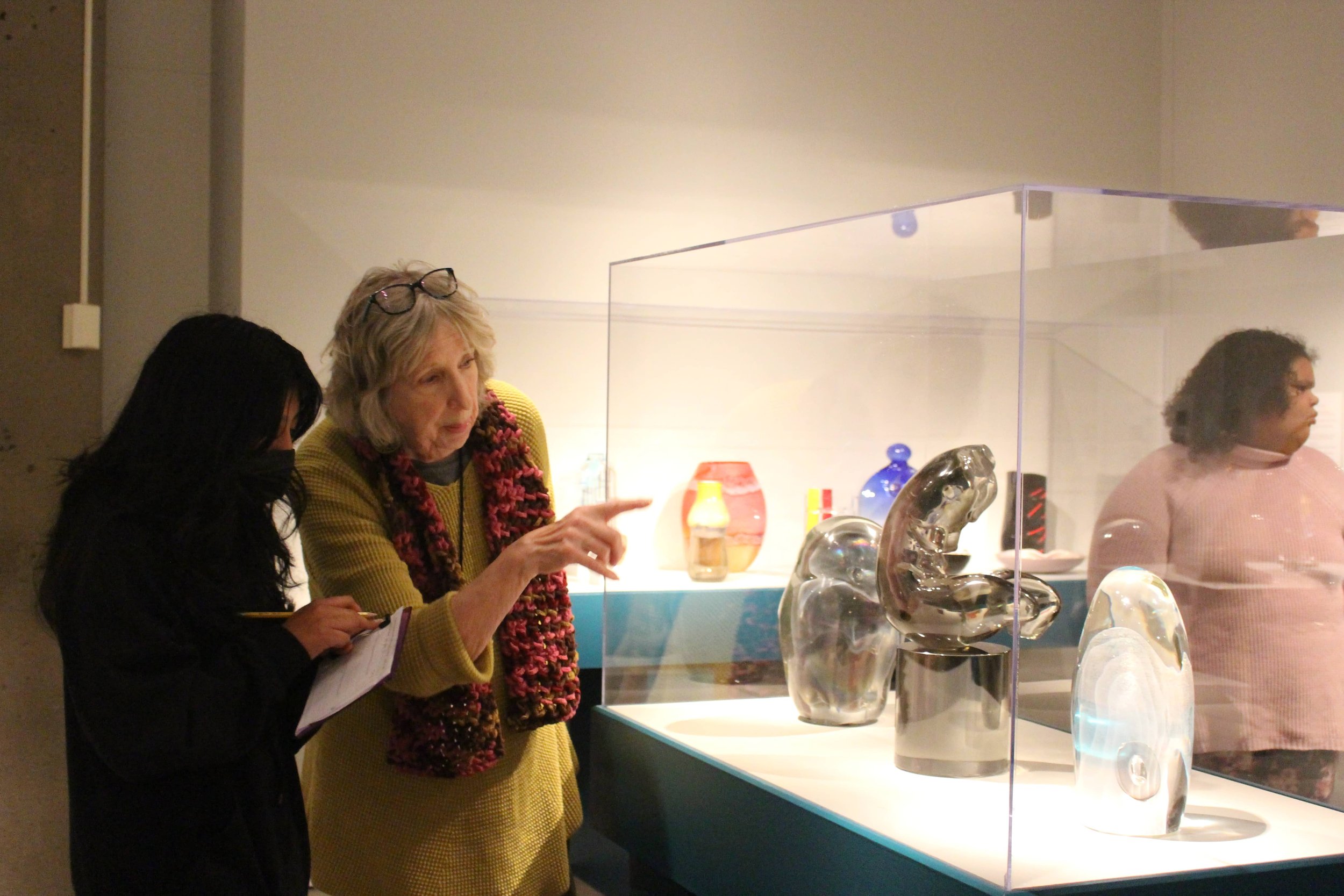Science of Art
Established in 2002, the Science of Art™ program at Museum of Glass is a pioneering educational outreach initiative for K-8 students that integrates art and science in the classroom to create a fuller and more comprehensive understanding of the workings of our world. The program teaches scientific principles, creative processes, and twenty-first century learning skills of teamwork, critical thinking, and applied problem solving. Lessons are designed to spark the imagination, motivating students to engage in lesson activities consisting of formal science, new technologies, and abstract art concepts.
Museum of Glass is in partnership with Tacoma Public Schools to offer every 6th grader in the district an in-person Science of Art experience. However, the program is available to any district.
The Science of Art curriculum approaches real-world problems with artistic and scientific thinking to invent novel solutions. Students involved in the program explore the world with creativity and develop a deeper understanding of their place in it. As of 2023, Science of Art has ignited the curiosity of over 12,000 students.
Science of Art Tours
The program has five distinct units based on Next Generation Science Standards and Washington State Arts Standards. It takes place over three sessions, beginning with two visits from a Museum of Glass art educator to the classroom and concluding with a trip to the Museum where students take guided tours of the galleries, Hot Shop, and Education Studio. In the Hot Shop, glassblowers demonstrate the intersection of the creative arts and the sciences, making the holistic merger of these disciplines tangible. In the Education Studio, students engage in artmaking, drawing inspiration from what they experience in the galleries and Hot Shop. On-site Science of Art tours are available for groups of 15-80 students.
Museum of Glass believes that arts engagement gives students the liberty to think, discover, and combine form and function. Science of Art provides teachers with pre- and post-visit curriculum materials which introduce and reinforce ideas that are important to students advancing in their grade levels. Innovative concepts and challenging activities are available, whether the child is learning in the classroom or at home.
Virtual Science of Art
In 2020, Museum educators introduced virtual access to the Science of Art curriculum, expanding access to school classrooms across the state of Washington while also providing children learning from home with opportunities to understand how the arts help increase their understanding of science, technology, engineering, and math. This also made the program a viable instrument as an international education platform. In 2022, the curriculum was further updated to focus on the concept of phenomena.
Virtual Science of Art offers students the same opportunity for experimentation and exploration within the intersections of art and science as the traditional Science of Art program. Each unit features a Creativity Trunk which includes supplies for all unit experiments and demonstrations. Creativity Trunks can be purchased from Museum of Glass for schools in the Tacoma, Washington area, or educators can compile their own Creativity Trunk using the supply list.
Program Units
Predicting the Pattern
2nd–4th Grade
Found in many places in life, patterns inform us and give us beauty. Exploring patterns in all their forms, from mathematical to daily routines, Predicting the Pattern includes a two day in-classroom activity followed by a tour at the Museum. Experience the power of mathematics in art.
$75/class of 30 students
Heat Transfer
6th–8th Grade
The power of temperature facilitates the creation of glass objects. Learn how heat transfers in its three main forms to aid the glass artist. Experience a hands-on phenomenological lab on heat transfer in the classroom, then come to the Museum to see real world applications.
$75/class of 30 students
Light Benders
3rd–5th Grade
Glass artists utilize optics to engage the viewer with their work. Glass by nature has optical properties to explore, both in practical applications as well as artistic ones. Learn how bending the light brings observation of optical effects to the classroom and beyond.
$75/class of 30 students
Fountains of Ink
3rd–6th Grade
Pigmentation uses a blend of many colors to obtain the color we observe. Which colors make up other colors and how color works as an indicator form the basis for the Fountains of Ink curriculum. Over a two-day period in the classroom, we decode the mystery of color and how it is used in science and art.
$75/class of 30 students
Pricing
Science of Art On-site Tours: $9/student, $6/teacher, $6/chaperone
Virtual Science of Art: $75/class of 30 students
Creativity Trunk: $100, supplies for 30 students
Ready to Book a Tour?
Email us or call 253.284.2137.
Booking Details
To book a tour or request the virtual program contact Elisabeth Emerson at 253.284.2137 or eemerson@museumofglass.org.
On-site Science of Art tours are available during the first and third weeks of each month. Pre-visit lessons with a Museum of Glass art educator will be scheduled the week prior to your Museum visit.
Please contact us to schedule your tour at least 4 weeks in advance. When calling to book a tour, please have several date options in mind. Payment can be made by cash, check, credit card, or purchase order. Cancellations must be made 72 hours prior to the tour to avoid charges.
Thank You to the Science of Art Sponsors
ArtsWA, The Kaleidoscope Foundation, The Gottfried & Mary Fuchs Foundation, Florence B. Kilworth Charitable Trust Foundation, and William Kilworth Charitable Foundation






